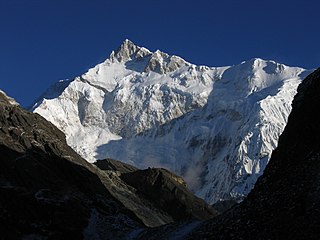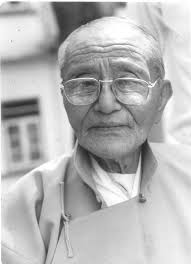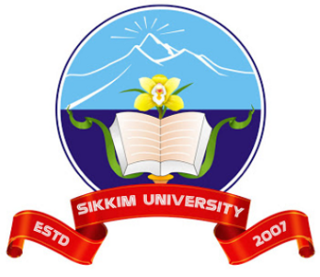Related Research Articles

Sikkim is a state in northeastern India. It borders Tibet in the north and northeast, Bhutan in the east, Nepal in the west, and West Bengal in the south. Sikkim is also located close to India's Siliguri Corridor near Bangladesh. Sikkim is the least populous and second smallest among the Indian states. A part of the Eastern Himalaya, Sikkim is notable for its biodiversity, including alpine and subtropical climates, as well as being a host to Kangchenjunga, the highest peak in India and third highest on Earth. Sikkim's capital and largest city is Gangtok. Almost 35% of the state is covered by the Khangchendzonga National Park.

The Lepcha are also called the Rongkup meaning the children of God and the Rong, Mútuncí Róngkup Rumkup, and Rongpa, are among the indigenous peoples of Sikkim, India and number between 30,000 and 50,000. Many Lepcha are also found in western and southwestern Bhutan, Tibet, Darjeeling, the Mechi Zone of eastern Nepal, and in the hills of West Bengal. The Lepcha people are composed of four main distinct communities: the Renjóngmú of Sikkim; the Dámsángmú of Kalimpong, Kurseong, and Mirik; the ʔilámmú of Ilam District, Nepal; and the Promú of Samtse and Chukha in southwestern Bhutan.
The Sikkim State Congress, or SSC, was an annexationist political party in the Kingdom of Sikkim. It was founded in 1947 and worked closely with the Indian National Congress (INC) to successfully achieve the annexation of Sikkim to India. Other parties established by the INC to serve India's interests in its near abroad included the Nepal State Congress Party and the Bhutan State Congress Party.

The history of Sikkim, an area in present-day North-East India, began in 1642 as a kingdom established when India and Nepal were still many princely states with many rulers at that time and had not unified to the present Union of India and present country of Nepal. At that time Sikkim had already solidified into country then with a king known as a Chogyal or dharma king, and till 16 May 1975 was an independent country ruled by the monarchs. Sikkim had twelve kings; Palden Thondup Namgyal was the last king of Independent Sikkim. There was contacts between ancient Hindus and Tibetans, followed by the establishment of a Buddhist kingdom or Chogyal in the 17th century. Sikkim emerged as a polity in its own right against a backdrop of incursions from Tibet and Bhutan, during which the kingdom enjoyed varying degrees of independence. In the early 18th century, the British Empire sought to establish trade routes with Tibet, leading Sikkim to fall under British suzerainty until independence in 1947. Initially, Sikkim remained an independent country, until it merged with India in 1975 after a decisive referendum. Many provisions of the Indian constitution had to be altered to accommodate the international treaties between Sikkim and India.
Limbu is a Sino-Tibetan language spoken by the Limbu people of eastern Nepal and India as well as expatriate communities in Bhutan, Burma, Thailand, the United Kingdom, Hong Kong, Canada and the US. The Limbu refer to themselves as Yakthung and their language as Yakthungpan. Yakthungpan has four main dialects: Phedape, Chhathare, Tambarkhole and Panthare dialects.
The Sikkimese language, also called "Sikkimese Tibetan", "Bhutia", "Drenjongké", Dranjoke, Denjongka, Denzongpeke and Denzongke, belongs to the Southern Tibetic languages. It is spoken by the Bhutia in Sikkim, India and in parts of Mechi Zone, Nepal. The Sikkimese people refer to their own language as Drendzongké and their homeland as Drendzong.

Kazi Lhendup Dorjee, also spelled Kazi Lhendup Dorji or Kazi Lhendup Dorji Khangsarpa, was the first chief minister of Sikkim from 1975 to 1979 after its union with India.

Sikkimese are people who inhabit the Indian state of Sikkim. The dominance ethnic diversity of Sikkim is represented by 'Lho-Mon-Tsong-Tsum' that identifies origin of three races since seventeenth century. The term 'Lho' refers to Bhutias (Lhopo) means south who migrated from southern Tibet, the term 'Mon' refers to Lepchas (Rong) lived in lower eastern Himalayas and the term 'Tsong' refers to Limbus (Tsong) another tribe of Sikkim. Sikkim is also home to the majority ethnic nepali(gorkhali) people which include tribes such as Limbu(Subba), Chhetri, Gurung, Thakuri, Newar, Magar(manger), Tamang, Kirat Rai, Kami, Sarki, Sunuwar, Shresthas, Hyolmo, Damai and Sherpa. However, Indian Gorkhas started to inhabited in Sikkim since the nineteenth century and later the presence of people from mainland India.
The indigenous peoples of Sikkim include the Lepchas, Limbus, Indian Gorkhas and Bhutias.

Sikkim University is a central university established under an Act of Parliament of India. It is in Gangtok. The campus is expected to be built at Yangang in South Sikkim district, about 56 kilometres (35 mi) from Gangtok. Its first chancellor was M. S. Swaminathan; Mahendra P. Lama was the first vice chancellor.
Sikkim Swatantra Dal was a political party in Sikkim. The party was founded and led by Namgay Tsering and Kazi Lhendup Dorji. The latter served as the president of the party. The party was launched ahead of the November 1958 election, formed after a split from the Sikkim State Congress. The party called for the abolition of the communal electoral system. Kazi Lhendup Dorji contested the November 1958 election, but lost his seat. All in all, Swantantra Dal won a single seat in the election.
Mun or Munism is the traditional polytheistic, animist, shamanistic, and syncretic religion of the Lepcha people. It predates the seventh century Lepcha conversion to Lamaistic Buddhism, and since that time, the Lepcha have practiced it together with Buddhism. Since the arrival of Christian missionaries in the nineteenth century, Mun traditions have been followed alongside that religion as well. The traditional religion permits incorporation of Buddha and Jesus Christ as deities, depending on household beliefs.

Sikkim Krantikari Morcha (SKM) is a political party in the Indian state of Sikkim. It is the current ruling party of Sikkim.
General elections were held in Sikkim in 1973. The Sikkim National Party emerged as the largest party, winning nine of the 18 elected seats.
General elections were held in Sikkim on 13 April 1974. They were the first elections in Sikkim to be held on the basis of universal suffrage, and also the last as an independent country. The result was a victory for the Sikkim National Congress, which won 31 of the 32 seats in the State Council. Kazi Lhendup Dorjee subsequently became Chief Minister. In May 1975 Sikkim became a state of India, at which point the State Council became the Sikkim Legislative Assembly.
Hamro Sikkim Party (HSP) is a regional political party in the Indian state of Sikkim. Incumbent president of this party is Bina Basnett. Election symbol is a Whistle.
Kunga Nima Lepcha is an Indian politician in Sikkim. He is the acting president of Sikkim Krantikari Morcha (SKM), incumbent member of Sikkim Legislative Assembly and the state Minister of Prem Singh Tamang ministry.
Sikkim National People’s Party (SNPP) is a regional political party in the Indian state of Sikkim. Incumbent president of this party is Delay Namgyal Barfungpa. Election symbol is Pen Nib. SNPP doesn't have any relationship with Sikkim National Party (SNP) in same state or National People's Party (NPP) in the state of Meghalaya.
Athup Lepcha is an Indian politician and environmental activist. He is the vice president of Hamro Sikkim Party (HSP) and the president of "Affected Citizens of Teesta" (ACT), Non-governmental organization for environment and biodiversity.
Biraj Adhikari is an Indian politician in Sikkim.
References
- 1 2 International Journal of Scientific and Research Publications. Political Parties and Regional Discourse in Sikkim
- ↑ J. R. Subba (2008). History, Culture and Customs of Sikkim. Gyan Publishing House. p. 27. ISBN 978-81-212-0964-9.
- ↑ International Journal of Scientific and Research Publications. Women “Quest” for Empowerment in Sikkim’s Society
| This article about an Indian political party is a stub. You can help Wikipedia by expanding it. |